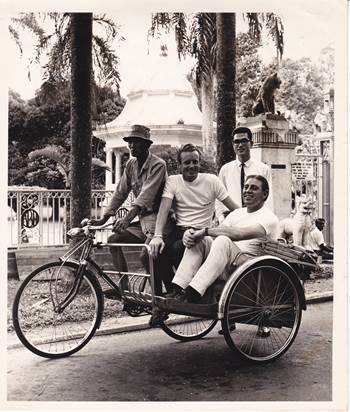
Whenever there’s a new range released by Holden Special Vehicles (HSV), we’re always interested to find out what they’ve done next, as generally we can’t see how they could improve on their previous incarnations. It may sound a bit fanboyish, but the features and performance that are packed into the cars are truly world class, and well beyond anything else on the market available for the same price.

When we were lucky enough to get a sneak preview of the MY16 range on September 21, we weren’t disappointed — especially when the first thing that flashed up on the slide show was ‘400kW’. That’s a number that anyone interested in the Gen F2, as the line-up has been called, should get used to.

That power, which features across the Clubsport R8 LSA line-up of sedan, Tourer (sport wagon), and Maloo (ute) comes from General Motors’ LSA power plant as previously used exclusively in the GTS. However, the 6.2-litre supercharged engine has had a few adjustments made from its 430kW GTS configuration, including the removal of the bi-modal intake set-up, and a retune, amongst others.

The R8 LSAs have benefitted from far more than just the LSA motor — they’re also endowed with a new Tremec TR6060 manual gearbox, or upgraded 4L90E automatic. Behind this is an upgraded driveshaft, which sends power to the GTS-spec 9.9-inch diff, complete with fractionally enlarged four-pot rear brakes.
Besides the mechanical advancements, the Gen F2 range features a new exterior look, thanks in part to the greater cooling requirements of the supercharged engine. The aggressive front ends — different on each GTS, R8, Senator Signature, and Grange — are aided by the bonnet side vents, which are now standard on high-end MY16 Holden Commodores. Add to this a deep-scalloped side skirt and new-look rear bumper that’s standard across the entire Gen F2 range, and you’ve got what’s possibly the best-looking HSV range to date.

Adding to the visual appeal are new wheels on the R8 LSA range and GTS, as well as two new colours. While the Empire (copper) colour is only available on Grange and Senator, the Slipstream (blue) covers the full spectrum, and from what we’ve seen so far, could become a big seller both here and abroad.

GTS interior
As always, if you’re not happy with the factory HSV look, there are various rear spoiler and wheel options available, along with other customization options for interior trim. Speaking of which, HSV have stated that due to customer feedback, they’ve removed the two signature gauges that have graced HSV centre consoles for as long as we can remember, and also made the Enhanced Driver Interface (EDI) an option, as opposed to factory fitment. While no prices for these as optional extras are currently available, we’re sure they’ll still appeal to the hard core. For the average HSV fan, though, we’re guessing the additions to the whole line-up will far outweigh the loss of these items.

Despite these additions, including the supercharger, running gear, new aesthetics, and wheels on the R8 LSAs, the price of the entire range remains relatively unchanged, with the Senator Signature being NZ$112,990 in both auto or manual, and the GTS remaining at exactly the same price; NZ$119,990 for the automatic and NZ$117,490 for the manual. Then again, due to popular success, the GTS also remains mechanically unchanged.
The R8 LSA sedan is just a few grand more than the outgoing R8s at NZ$99,990 (manual) and NZ$102,490 (automatic), while the Tourer will set you back NZ$103,990 (auto only), and in Maloo format NZ$95,990 (manual) or NZ$98,400 (automatic).
If 400kW is a bit too much for you, HSV will release a non-LSA-powered R8 line-up later in the year. However, with New Zealand’s HSV buyers generally going big, we’re predicting far fewer of these ‘traditional R8s’ will hit dealer floors.

The Gen F2 range is set to land in New Zealand towards the start of November, but if you’re keen to get your hands on any of the first arrivals, you’d best place your order now, as with 400kW on tap, they’re not going to hang around for long!
*All prices mentioned are HSV RRPs and include GST, but exclude on-road costs.

















































